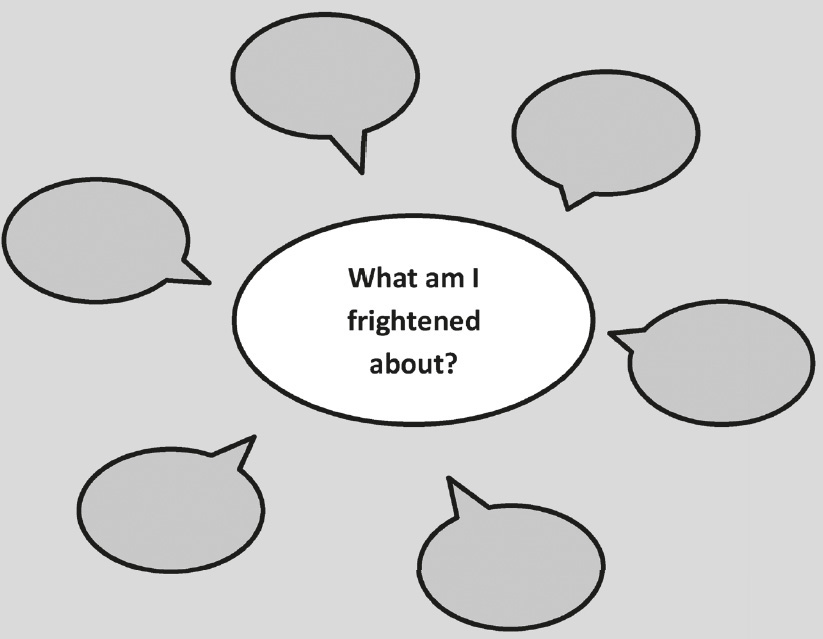7
Coping with Fears and Emotions
Staying busy caring for a sick or elderly animal can at times take your focus away from personal feelings, but fears and strong emotions naturally arise, often in the quieter moments when you reflect on what is happening. Because the grief process starts before the actual loss, there are bound to be times when you feel incredibly upset at the prospect of your pet’s death. Although it is understandably painful and difficult, don’t try to hide or stifle emotions; instead, allow them to surface and be released as and when you can.
Emotions naturally play a crucial role throughout the grief process: before, during, and after a loss. Anyone who has experienced a significant loss will know how incredibly powerful and destabilizing they can be. I remember feeling like I was drowning in emotional pain after losing a most precious rescue dog. It was as though I was standing in the ocean with my feet just touching the sand below whilst massive waves rose up and crashed down right on top of me.
Being at my wits’ end, I recall how I grabbed the phone to contact someone whom I knew was an incredible counsellor and support to people through the whole end-of-life process. I was struggling to stay afloat in the overwhelming waves of my emotions, but her calm voice and compassionate understanding threw me a lifeline.
She reminded me that emotions are finite, and in that instant, I realized that after each overwhelming wave, there was a short period of quiet. These brief moments became my oasis of sanity, and I learnt to use them carefully to lift myself up for a little while and focus on the value and gratitude of having shared ten years of my life with such a marvellous little companion. Gradually, the waves of emotion became smaller and less frequent, and although it remained difficult to cope with the emotional roller-coaster my life had suddenly become, I knew that in time I would work through it and come out the other end.
Try to be aware of your stress levels, and remember that, as the carer, you also need to receive care. If you have friends or family who understand that you’re going through a difficult time, allow yourself to accept their love, support, and, where appropriate, practical assistance. If you aren’t able to draw upon others in this way, there are some excellent organizations that offer a listening ear, understanding, and support to people before and after pet loss. No one has to go through this totally alone; support can be found by searching on the internet for “pet bereavement support”.
Besides worrying over the many practical issues, you may find you have numerous free-floating anxieties about your impending loss, such as:

ACTIVITY: Identifying Free-floating Fears
As difficult as it seems, it’s useful to identify and name each worry or fear, so that it is out in the open rather than rattling around inside your head alongside numerous other issues you are trying to cope with. Once it’s out in the open you may begin to look at what you can do, if anything, about each one. Remember that you are going through an incredibly difficult process and, as well as caring for your much-loved pet, it is important to look after your own well-being.
Take some private time to think about what you’re frightened of, and jot each one down. You may want to create your own speech bubbles, as below.

Having identified all these worries or fears, have a think about whether there is something you can actually do to settle your mind on some of these issues, and write them in the spaces you create. If it’s easier, just jot them down on bits of card or pieces of a sticky pad or paper.
For example, if you are frightened of being alone with your grief, is there a close friend or relative in whom you can confide? Do you want to get in touch with a pet bereavement support organization through the internet, or perhaps some worries could be allayed by talking to one of your vet team.

This activity will no doubt highlight some things about which you can do very little, if anything. If this is the case, take a few minutes in the day to simply acknowledge what you are feeling. Remember that it’s both natural and normal to feel as you do; we cannot love without sometimes feeling the pain of loss and grief.
Settling your mind on some of these issues will facilitate a calmer atmosphere in the home, which can only benefit you and your pet, enabling you to make the most of the time you have left together. This is important because, if circumstances allow, it helps to slow down and consciously share some special time with your pet whilst you can.

And now, before we continue further, here is a short and simple exercise to help you to pause and breathe.
ACTIVITY: One-Minute Breathing Exercise
You can do this exercise lying down, sitting, or standing, and no one will know you are doing it. It helps to bring a sense of calm, whilst sending signals to your mind and body that it is safe to slow down and relax. The more you practise it, the easier and more familiar it becomes.
- Stand, sit, or lie down.
- Take a slow in-breath through your nose and then release it slowly.
- Breathe in for a count of three, and out for a count of five.
- Allow the air to flow into your chest on the first breath, your stomach on the second breath, and finally your abdomen on your third breath.
Breathe in for the fourth time into your abdomen, hold your breath for a count of two, then exhale slowly.